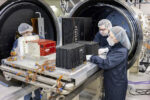NASA and its partners are accelerating the integration of remotely piloted aircraft systems (RPAS) into the U.S. National Airspace System (NAS), focusing on the complex challenges of beyond-visual-line-of-sight (BVLOS) operations. Through a series of live flight tests and simulations under the System Integration and Operationalization Project (SIOP), NASA is validating technologies such as detect-and-avoid (DAA), command-and-control (C2) links, and Uncrewed Aircraft System Traffic Management (UTM) frameworks. These efforts aim to enable routine RPAS operations alongside crewed aircraft in controlled airspace.
System Integration and Operationalization Project Overview
The System Integration and Operationalization Project (SIOP), led by NASA’s Aeronautics Research Mission Directorate, is a multi-year initiative designed to bridge technical gaps preventing routine RPAS operations in civil airspace. The project focuses on integrating key enabling technologies—such as DAA systems compliant with RTCA DO-365/366 standards, secure C2 data links across multiple frequency bands (including C-band and L-band), and scalable UTM architectures—into real-world flight scenarios.
SIOP has partnered with several major aerospace players including General Atomics Aeronautical Systems Inc. (GA-ASI), American Aerospace Technologies Inc. (AATI), Bell Textron Inc., and Reliable Robotics. Each partner contributes unique platforms or technologies for testing under realistic operational conditions that simulate commercial or public service missions such as cargo delivery or disaster response.
Live Flight Testing with Industry Partners
In 2023–2024, SIOP conducted a series of live flight tests at NASA Armstrong Flight Research Center in California’s Mojave Desert. These tests involved platforms such as GA-ASI’s MQ-9B SkyGuardian—a medium-altitude long-endurance RPAS equipped with onboard DAA sensors—and AATI’s AiRanger fixed-wing drone optimized for long-range BVLOS missions.
The objectives included:
- Validating airborne DAA performance against cooperative and non-cooperative intruders using ADS-B In/Out and radar fusion
- Testing C2 link robustness under degraded signal conditions using SATCOM redundancy
- Demonstrating dynamic airspace re-routing via UTM interfaces during simulated emergency scenarios
Notably, the MQ-9B flights demonstrated seamless integration with FAA-assigned transponder codes while operating in Class A airspace under Temporary Flight Restrictions coordinated with ATC—an important milestone toward certifiable RPAS operations in civil environments.
UTM Evolution for BVLOS Operations
Navigating uncrewed flights safely through shared airspace requires more than onboard sensors—it demands a robust ecosystem for traffic management. NASA’s work on Uncrewed Aircraft System Traffic Management (UTM) began nearly a decade ago but has evolved significantly to support BVLOS operations at higher altitudes (>400 ft AGL).
The current iteration integrates:
- Strategic deconfliction tools based on intent sharing between operators
- Tactical conflict resolution modules leveraging real-time telemetry feeds
- Interfaces for weather avoidance routing using NOAA data overlays
- Compliance monitoring for FAA Part 91/107 rulesets via automated conformance checks
This architecture is being aligned with the FAA’s future “UAS Traffic Management Implementation Plan” which envisions federated service providers managing low-altitude corridors under common standards.
Civil-Military Implications of RPAS Integration
While SIOP targets civil applications like cargo logistics or infrastructure inspection, its technical outcomes have dual-use relevance for military unmanned systems operating near civilian zones or in domestic support roles. Seamless integration of RPAS into national airspace could facilitate:
- DOD humanitarian/disaster relief missions using HALE drones without segregated air corridors
- Tactical ISR flights over CONUS training areas without requiring special use airspace waivers
- Joint interagency operations involving DHS or FEMA assets during emergencies
The ability to demonstrate certifiable DAA/C2 compliance also supports NATO interoperability goals where allied forces may operate drones across shared European skies governed by Eurocontrol equivalents.
Next Steps Toward Regulatory Adoption
SIOP outputs feed directly into FAA rulemaking processes aimed at enabling routine BVLOS operations beyond limited waivers currently issued under Part 107 exemptions. NASA is sharing test data with RTCA SC-228 committees responsible for updating Minimum Operational Performance Standards (MOPS) for DAA/C2 subsystems.
The roadmap includes:
- A final SIOP technical report slated for late FY2024 summarizing all test results across partners/platforms
- A transition plan toward operational trials with commercial operators under FAA oversight by FY2025–26
- Liaison efforts with ASTM F38 working groups to harmonize industry consensus standards globally
Conclusion: Toward Routine RPAS Operations in Shared Airspace
The integration of remotely piloted aircraft into national airspaces remains one of the most challenging frontiers in aviation modernization. NASA’s SIOP program represents a critical step forward by demonstrating that key enabling technologies—DAA sensors, resilient C2 links, scalable UTM frameworks—can be matured through rigorous testing in collaboration with OEMs and regulators alike.








